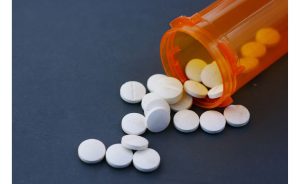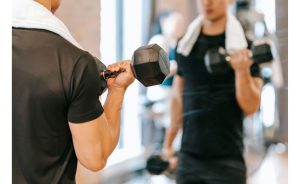Schedule | - 4:30 pm
Medicine Has Advanced a Lot, but Physical Activity, Combined With Adequate Sleep and a Balanced Diet, Is the Best Recipe for Maintaining Health

Medicine has evolved a lot in recent decades, and most common diseases rely on at least one type of drug treatment. The intense routine drives human beings to seek quick solutions to their problems and pain, such as resorting to pills. However, few try to understand why an illness took hold in their body and what behavioral changes can be effective in improving the body’s functioning.

Physical exercise, quality sleep, and a balanced diet. These three simple, low-cost habits are capable of transforming a person’s health, as they offer the body what it needs most: nutrients, adequate rest, and movement to strengthen it. But why is it so difficult to leave square one and invest in self-care?
According to a study released by the World Health Organization (WHO) earlier this year, around 1.8 billion adults around the world were sedentary or did not reach ideal levels of physical activity in 2022. The number is equivalent to 31% of the world population and is worrying because it reveals the percentage of people at greater risk of developing diseases related to inactivity, including type 2 diabetes, dementia, cardiovascular diseases, and even cancer.

Although physical activity is recommended for all age groups, the WHO report highlights that the elderly are the most sedentary. Perhaps the initial difficulty in completing a series of exercises discourages people over 60, but this thinking must be changed. This is because the main characteristic of exercising is evolution. The more a person dedicates themselves to a certain activity, the better they get over time and reap the benefits in their daily lives.
“As the individual performs a regular physical activity, blood circulation improves, and this increases good cholesterol, which defends the body from bad cholesterol and, consequently, prevents the formation of fatty plaques that clog arteries in the heart, brain, and legs,” says Brazilian cardiologist and sports doctor Giulio Cesare.
The results are seen in several ways, including improved mobility. Carrying a bag, walking, climbing stairs, and sitting in a chair seem like commonplace actions, but aging, combined with a sedentary lifestyle, can make them very difficult due to the lack of flexibility or even strength in muscles and bones. Regardless of the condition, it is possible to reverse it, and the remedy is not pills but rather a daily dose of physical activity.
In addition to aerobic exercise, research draws attention to the importance of strengthening muscles through weight lifting. An American study published in the British Journal of Sports Medicine followed 150,000 people between 60 and 70 years of age and concluded that those who did the 150 minutes of activity per week recommended by the WHO lived longer than those who did not. And those who combined aerobic exercise with muscle strengthening had even better results, with a 47% reduction in the risk of dying from any cause, except cancer, over the next nine years.
It is worth noting that weightlifting is not just restricted to bodybuilding but is also related to push-ups and sit-ups with your own body weight, Pilates, and resistance exercises with elastic bands. Despite being a recommendation for people of all ages, the elderly need to reinforce this care, as, with aging, the chances of sarcopenia increase, which is the loss of lean mass and muscle strength, a condition that directly affects the quality of life.
Practicing sports also benefits the brain. Research that brought together scientists from around the world confirmed that walking, running, yoga, strength training, and dancing are the most effective activities against the symptoms of depression. “Movement stimulates the release of neurotransmitters, such as serotonin and dopamine, responsible for well-being,” explains Dr. Cesare. Other studies also highlighted the effectiveness of activities in combating anxiety disorders and dementia.
Researchers from the Departments of Physiology and Psychobiology at UNIFESP and the Department of Biochemistry at the Institute of Chemistry at USP (IQ-USP) carried out experiments involving mice and discovered that resistance exercises are an increasingly effective strategy to prevent or delay the onset of symptoms of Alzheimer’s, the main type of dementia that over time impacts memory, speech, and mobility.
To make physical activity even safer, exams must be up to date. Furthermore, the recommendation is to start lightly and gradually increase the intensity until the body adapts. “All activities deserve this evaluation, but depending on the physical activity, it can be simpler or more complex. A child, for example, can only undergo a clinical evaluation and some simpler tests, such as an electrocardiogram, and the same goes for a person over 40 years old interested in Pilates. Now, if it is an intense, high-performance, competitive activity and the patient is over 30 years old, it needs to be something more elaborate, such as an echocardiogram. Everything will depend on the type of physical activity and each person’s history,” concludes Dr. Cesare.